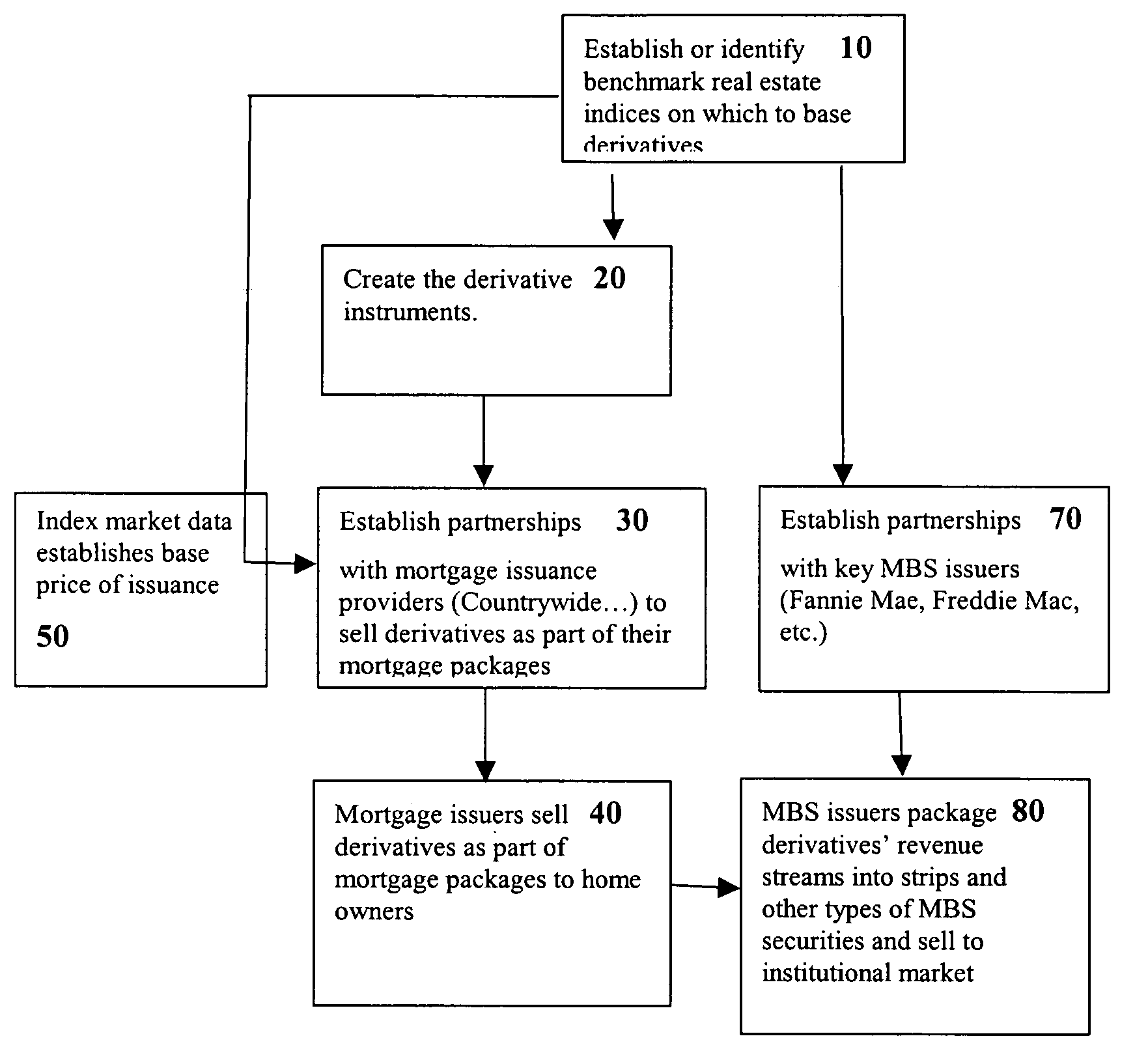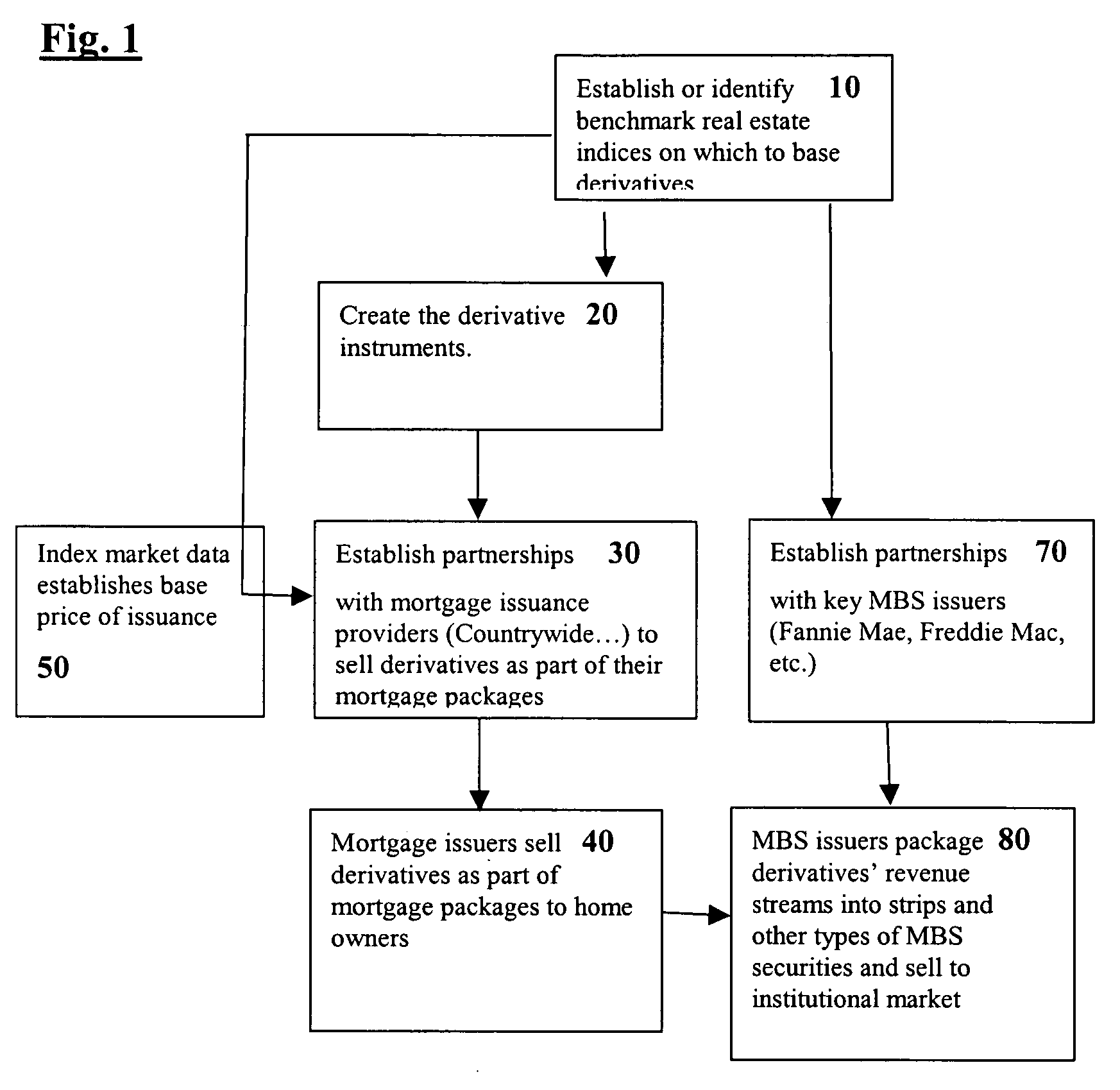Home equity protection contracts and method for trading them
a technology for protecting contracts and homes, applied in the field of financial instruments, can solve the problems of affecting the net worth of many homeowners, affecting the construction and development of residential properties, and affecting the ability of homeowners to buy and sell, so as to achieve the effect of extending the investment portfolio
- Summary
- Abstract
- Description
- Claims
- Application Information
AI Technical Summary
Problems solved by technology
Method used
Image
Examples
Embodiment Construction
[0015] These and other objectives are achieved by the present invention, a “Home Equity Protection Product” (HEP), which is a cash settled financial instrument that is based on an underlying index or data point of similarly priced residential real estate properties, or some other underlying factor impacting residential real estate. The HEP will protect home owners by repaying them all or a substantial portion of any loss in the value of their home equity
[0016] For purposes of this application, “residential real estate” means owner-occupied residential dwellings, including but not limited to houses, townhouses, condominiums, owned apartments, and co-ops.
[0017] The natural buyers of the HEP are residential property owners and lenders. The invention calls for the home owner to pay an additional fee each month as part of their mortgage payment to purchase the HEP. The HEP will then protect the home owner's equity in the event of a decline in the value of the HEP's underlying index by ...
PUM
 Login to View More
Login to View More Abstract
Description
Claims
Application Information
 Login to View More
Login to View More - R&D
- Intellectual Property
- Life Sciences
- Materials
- Tech Scout
- Unparalleled Data Quality
- Higher Quality Content
- 60% Fewer Hallucinations
Browse by: Latest US Patents, China's latest patents, Technical Efficacy Thesaurus, Application Domain, Technology Topic, Popular Technical Reports.
© 2025 PatSnap. All rights reserved.Legal|Privacy policy|Modern Slavery Act Transparency Statement|Sitemap|About US| Contact US: help@patsnap.com


